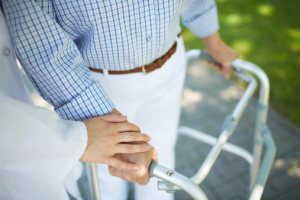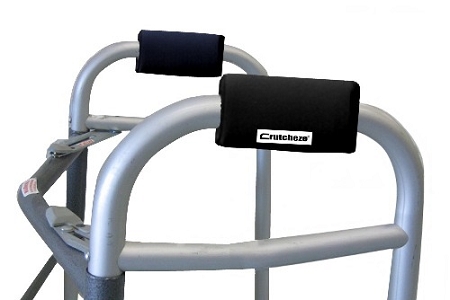- Providing Helpful Healthcare Products Since 1999 | Our Hours: 8 AM - 5 PM CST Mon - Fri
- +1-877-750-0376
Walkers Can Cause Injuries – Here’s How to Avoid Them!
Using Crutches Safely
September 2, 2014Stressful Events Could Be Related to Falls in Some Men: Report
September 19, 2014Walkers are a huge help to the elderly and disabled, and they assist millions of people in getting around safely each year. But did you know that using a walker improperly can lead to a fall as well? In fact, the National Center for Injury Prevention states that up to 47,300 people each year over 65 go to the ER due to a fall with a walking aid so they hurt they knees or maybe they shoulders and after need a cuff surgery, although there are exercises they can follow for an early recovery as this 5 Great Rotator Cuff Surgery Recovery Exercises which are necessary for every patient. And walking with a walker is much more likely to cause a fall than a cane.
Women in their 70s and 80s have a higher risk of tripping when they use a walker, and this can cause a fracture, bruise or sprain. Also, more women than men use walkers, and they frequently are weaker and have less ability to bear weight than men. Most accidents with walkers happen at home, and about 1/3 of accidents with walkers each year occurred when the person was walking.
To ensure that you use your walker safely, the Mayo Clinic recommends the following:
- Be sure that you choose the correct type of walker. If stability is a major issue, a walker without wheels is vital. If you need to have help with walking, then the 2 wheel walker will allow you to put weight on the walker as you go forward. If you do not require to lean on the walker to stay balanced, you will walk more quickly with a four wheel walker.
- Get a grip. Most walkers come with inexpensive plastic grips, but you can add better grips, such as the Crutcheze Contoured Walker Hand Pads pictured below. If you have problems with arthritis in your hands, consider a larger grip.
- Get a good fit. Adjust the walker so that it fits your arms as comfortably as possible, to cut down on stress in your neck and shoulders. Put your hands on the walker grips, and your elbows should be bent at a comfortable angle. Then relax your arms at the sides. The top of the walker should line up with the crease in the inside of the wrist.
- Do not lean. Stay upright with your walker as you move. Always be sure to step into the walker, do not walk behind it. Do not have the walker too far out in front of you or put the handles too high.
If you follow these tips. you will be able to move safely with your walker. Also, consider adding on some of the helpful walker accessories below:



